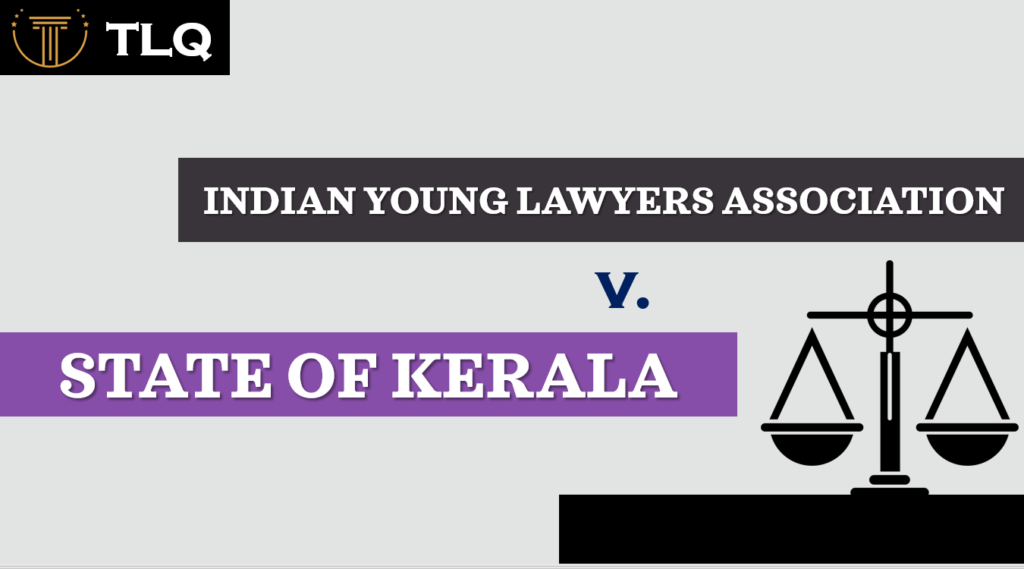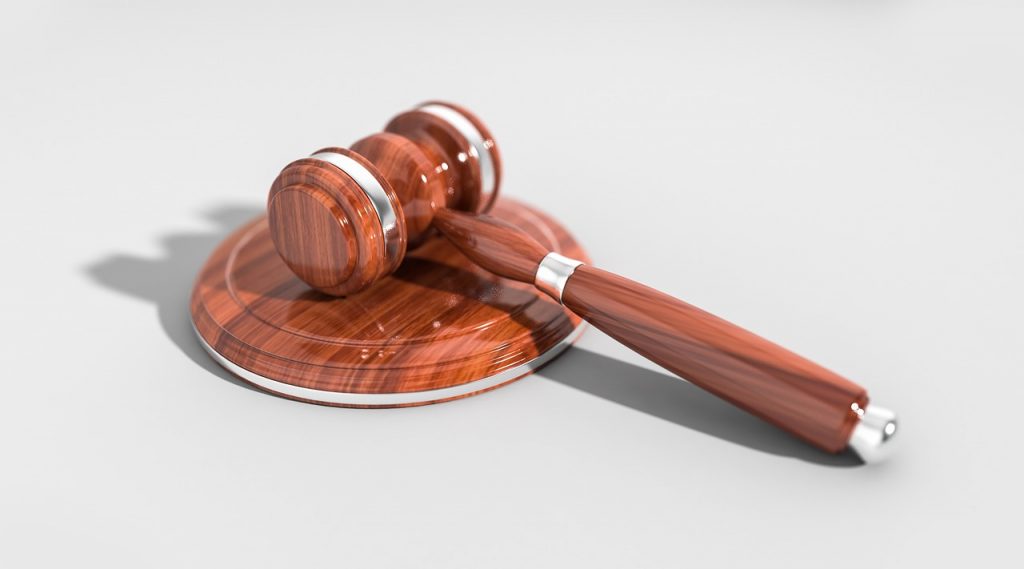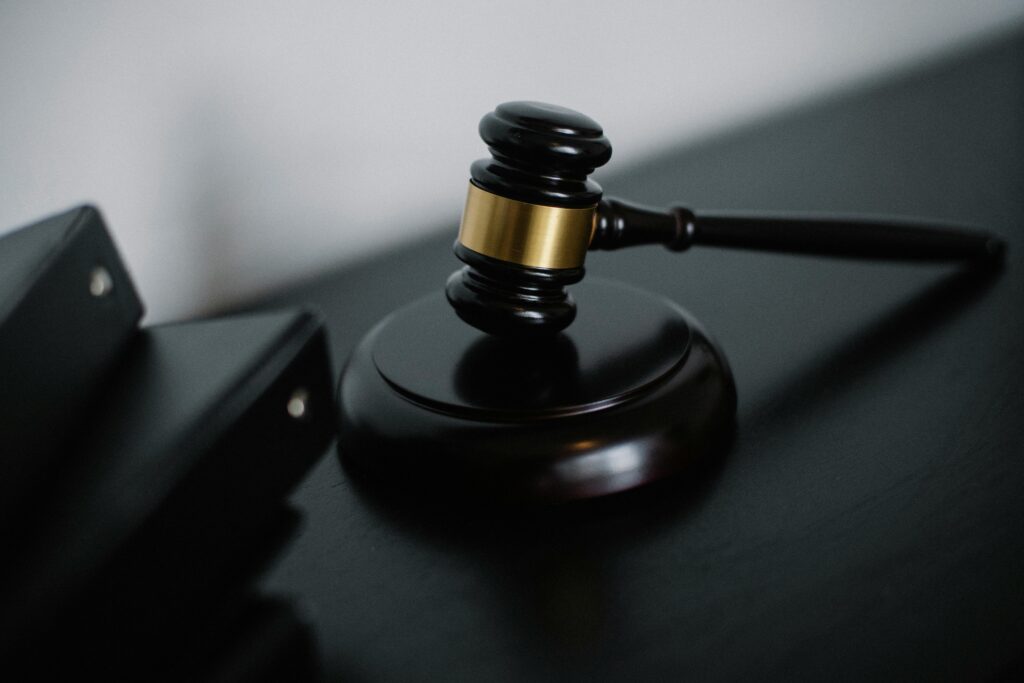Published On: 15th April, 2024

INTRODUCTION:
In 2006, the Indian Young Lawyers Association initiated a significant legal case known as Indian Young Lawyer Association & ors vs. State Of Kerala & Ors through a public interest litigation (PIL) before the Supreme Court of India. This case centers on the contentious issue of allowing women’s entry into the Sabarimala Temple. Situated within the Periyar Tiger Reserve in the Western Ghats of Pathanamthitta District, Kerala, this temple is dedicated to Lord Ayyappa. Its tradition historically prohibited women aged between 10 to 50, considered of menstruating age, from entering, citing religious reasons. The petitioners argued that such restrictions contravened several articles of the Indian Constitution, including Articles 14, 15, 16, 17, 25, and 26, as they perpetuated discrimination based on gender.
FACTS:
The Sabarimala temple holds significant religious importance as a pilgrimage site for Hindus. Despite its renown, the temple has imposed a longstanding restriction preventing women of menstruating age from entering its premises. Several women have attempted to defy this restriction, only to face threats of physical violence. In 1991, a group of five women lawyers took the matter to the Supreme Court, challenging a decision made by the Kerala High Court. However, the Court upheld the prohibition, ruling that the restrictions did not violate constitutional principles. In 2006, the Young Lawyers Association contested this ban, arguing against Rule 3(b) of the Kerala Hindu Places of Public Worship rules, 1965, which stipulated that women who were traditionally barred from entering places of public worship should continue to be excluded. Subsequently, in 2008, the Public Interest Litigation (PIL) was brought before a constitutional bench presided over by former Chief Justice of India, Dipak Mishra.
ISSUES BEFORE THE COURT:
- Whether the exclusionary practice which is based upon a biological factor exclusive to the female gender amounts to “discrimination” and thereby violets the very core of Article 14, Article 15, and 17 and is protected by “morality” as used in Article 25 and Article 26(6) of the constitution.
- Whether this restriction violate the provision of the Kerala Hindu Place of Public Worship Act, 1965?
- Whether the Sabarimala Temple has a denominational character?
- Whether rule 3 of the Kerala Hindu Places of Public Worship (Authorized of Entry) rules permit religious denominations to ban entry of women between the ages of 10 to 50 years?
ARGUMENTS OF THE PETITIONER:
The petitioners advocating for women’s entry into the Sabarimala Temple put forth arguments asserting that menstruation should not be considered impure, and women should have equal rights to access the temple. Throughout history, women have had to contend with societal challenges and inequalities, striving for parity on public platforms. It extends beyond mere representation; it involves challenging the entrenched rules and customs within patriarchal societies, where women often find themselves relegated to subordinate roles. This legal case represents a pivotal struggle against the patriarchal ideologies entrenched within religious norms, which bar women from entering the temple. It provided the Supreme Court with an opportunity to bridge the divide between constitutional principles and the prevailing realities of society.
ARGUMENT OF THE RESPONDENT:
The respondents opposing women’s entry into the Sabarimala Temple presented arguments rooted in the belief that certain religious practices, while not ancient, are traditions meant to honor the deities of the temple. They pointed out that men are also barred from entering and worshipping in various temples, such as the Brahma temple in Pushkar. They contended that the restrictions in place do not violate Articles 15, 25, and 26 of the Indian Constitution because they apply only to women of a specific age group, rather than women as a whole. Furthermore, they cited provisions within the Kerala Hindu Places of Public Worship Act, 1965, which support the legitimacy of these restrictions.
RATIO DECIDENTI:
The legal principle of Ratio Decidendi forms the foundation of judicial decisions and holds binding authority. On September 28th, 2018, the Supreme Court rendered its verdict in the Sabarimala case, with a majority decision of 4:1. The ruling determined that the practice of restricting women’s entry into the temple violated fundamental rights enshrined in the Constitution, including equality, liberty, and freedom of religion under Articles 14, 15, 19(1), 21, and 25(1). Consequently, the Court invalidated Rule 3(b) of the Kerala Hindu Places of Public Worship Act, which permitted Hindu denominations to bar women from public places of worship based on custom. The Supreme Court’s decision mandated the inclusion of women from all demographics at the Sabarimala Temple, asserting that devotion cannot be subjected to gender discrimination.
OBITER DICTUM:
Obiter Dictum refers to a judge’s opinion expressed during court proceedings or in a written judgment, which is not crucial to the final decision and thus does not carry legally binding as precedent. In the Sabarimala case, the court made the following statements: “We firmly believe that such practices violate women’s right to access temples and freely observe the Hindu faith.” Additionally, it emphasized, “Devotion should not be subjected to gender discrimination.”
The Chief Justice of India, in his judgment, underscored that religion represents a way of life intertwined with individual dignity, and patriarchal practices favouring one gender over another should not impede upon the fundamental freedom to practice one’s religion.
The Supreme Court has unequivocally declared that the practice of barring women from a specific age group, particularly those in their ‘menstruating years,’ from entering the Sabarimala Temple, is unconstitutional.
COMMENT:
From an expert viewpoint, the rights granted to women by the Supreme Court of India should be reevaluated, given their potential conflict with the fundamental rights attributed to deities under Hindu law, acknowledging them as living entities. This matter was discussed by the court during the Ram Mandir verdict, which affirmed that deities under Hindu laws are entitled to protection under individual rights as outlined in Article 25(1) of the Constitution. In the case of the Sabarimala Temple, devout followers believe that the deity Ayyappa maintains Brahmacharya, a state of celibacy, and thus should not encounter women of menstruating age to preserve this celibacy. However, it’s important to note that women of similar age groups are allowed in three other Ayyappa temples in Kerala: Achankovil, Aryankavu, and Kulathupuzha, where the deity is depicted alongside his consorts.
Ultimately, it is crucial to acknowledge that applying secular reasoning in non-secular domains may not fully capture the nuanced essence of the issue.
CONCLUSION:
The Sabarimala Temple case stands as a landmark judgment, evoking diverse perspectives among legal scholars regarding the Supreme Court’s decision, which declared the practice of barring women of certain menstruating ages from the temple as unconstitutional. While the Constitution values religious customs, the Court’s ruling appeared to disregard this aspect, prompting considerable debate. It’s crucial to recognize that many aspects of this case demand a thorough examination.
In conclusion, it’s vital to acknowledge the complexities involved and the array of viewpoints requiring further consideration. Ultimately, this case serves as a reminder that the rights of any group should not override those of the broader community. It underscores the delicate balance between individual freedoms and communal traditions, emphasizing the ongoing discourse necessary to navigate such sensitive issues within a legal framework that respects both tradition and constitutional principles.




